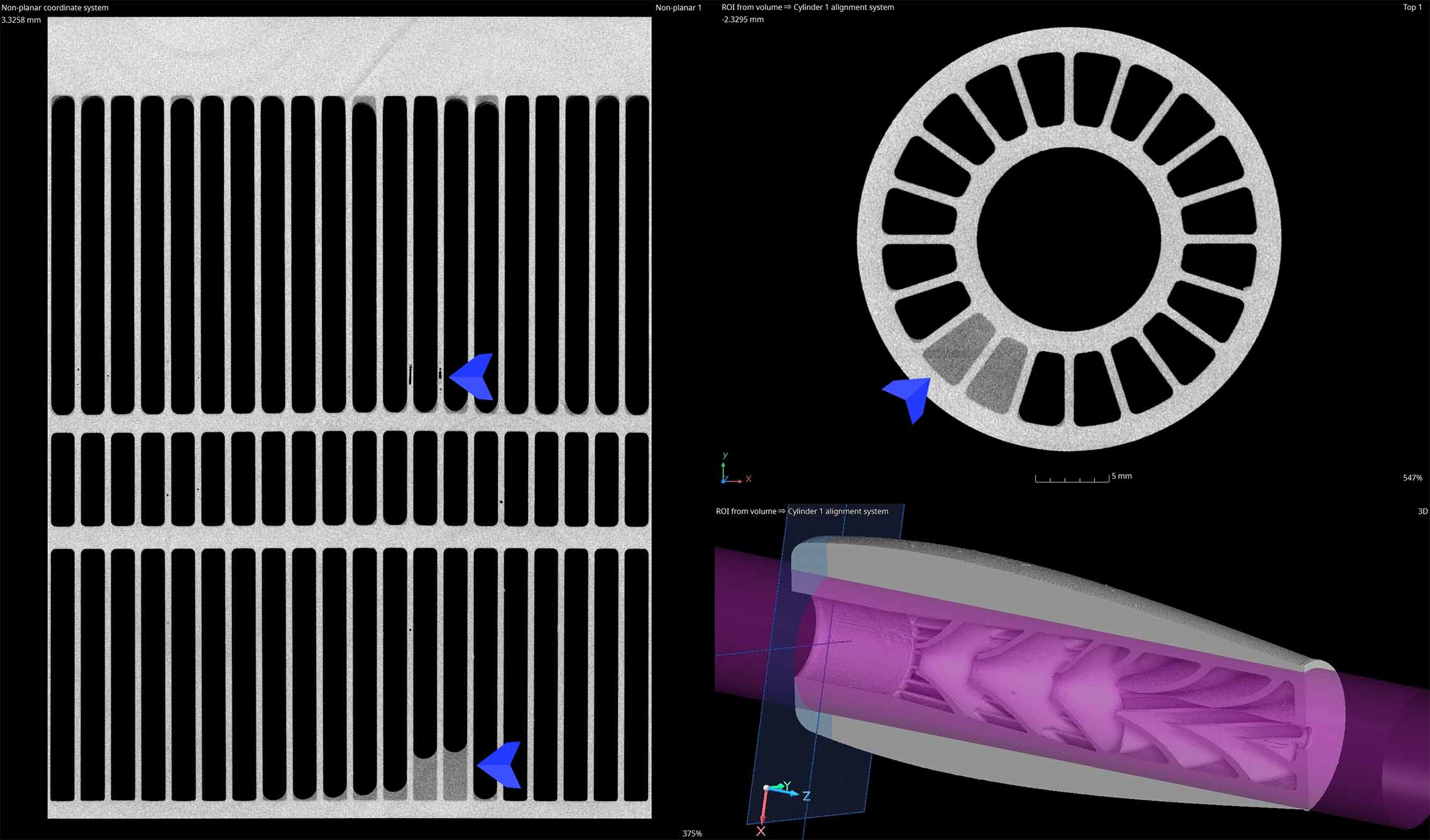Inspecting Additively Manufactured Components using Industrial CT Scanning
Additive manufacturing (3D printing) allows for the creation of highly complex and intricate designs that would be difficult or impossible to achieve with traditional manufacturing methods. This includes features like internal channels, lattice structures, and custom geometries. Because these complex designs are typically internal, their inspection is also extremely difficult or impossible. One option is to physically cut the part, but this introduces a variety of consequences. Another option, and the purpose of this case study, is to digitally cut through the sample using Industrial CT Scanning technology. CT Scanning allows us to capture highly accurate data for the inspection of internal and external geometry of a variety of components.

ROTATIONAL VIEWING METHOD
Cylindrical parts like this can be viewed about an axis. A cylinder is defined and then the viewing pane rotates about that axis to show inconsistencies and indications. The left arrow shows vertical build failures. The right arrow shows trapped build material.

UNROLL VIEWING METHOD
For an alternative look at internal geometries, a cylindrical feature can be “unrolled” into a planar view. Image a toilet paper roll cut down one side and laid flat on a table. This offers the viewer the opportunity to simultaneously view a given offset from an axis.

VOLUMETRIC POROSITY CALCULATIONS
Porosity and inclusions can be extracted and calculated for volume, spherical diameter, and other characteristics. This information can be used to qualify parts or amend manufacturing parameters for better parts.

BUILD DEFECT LOCATING AND IMAGING
Internal build failures can be located and evaluated before the component makes it into the field.

